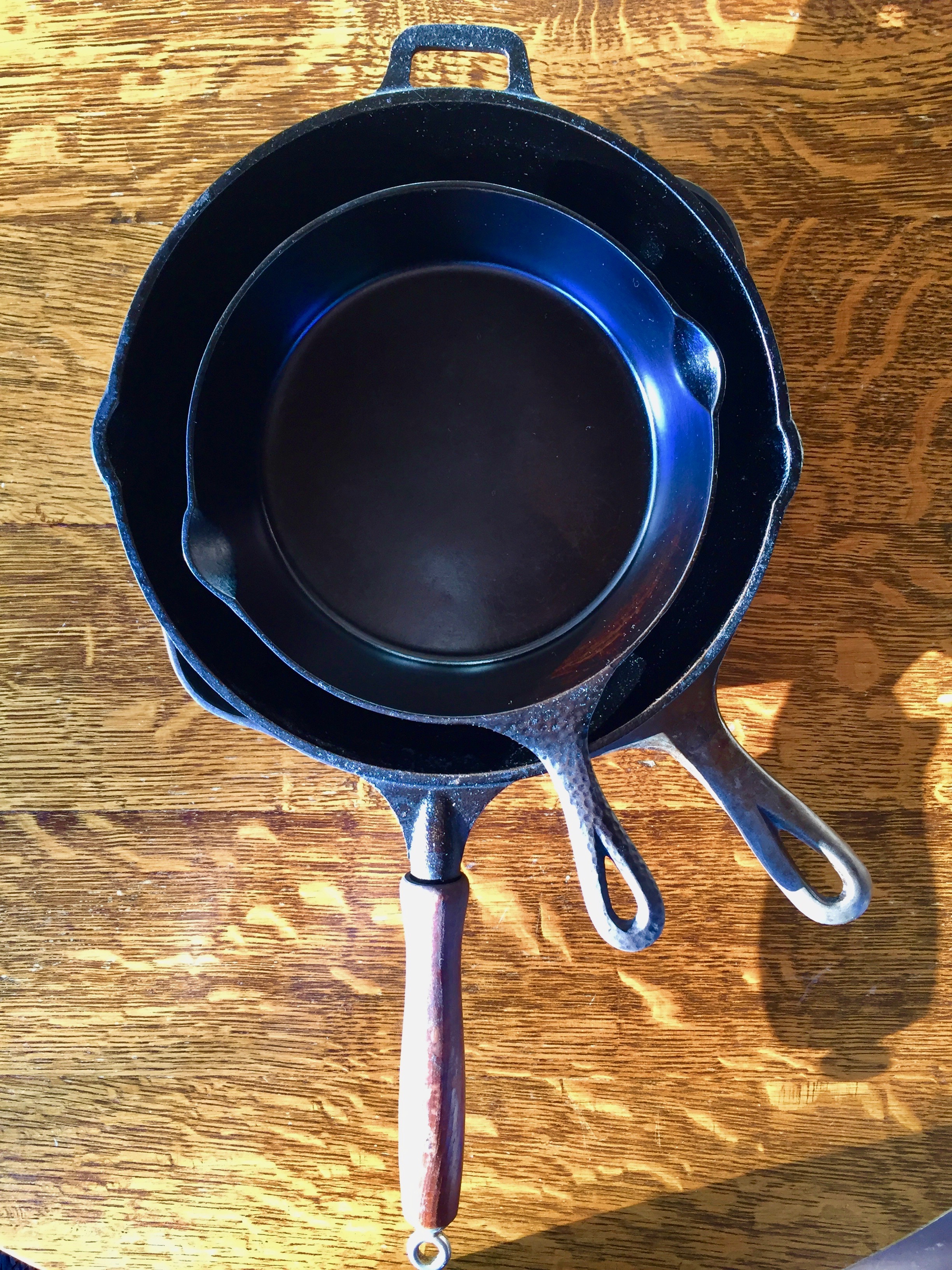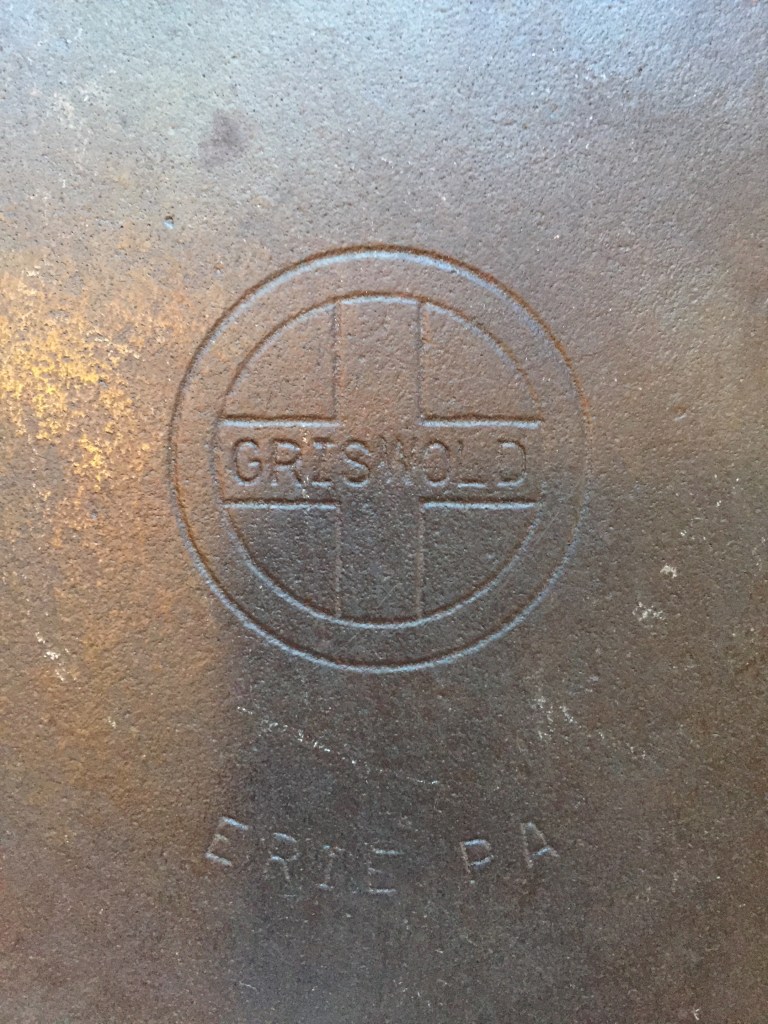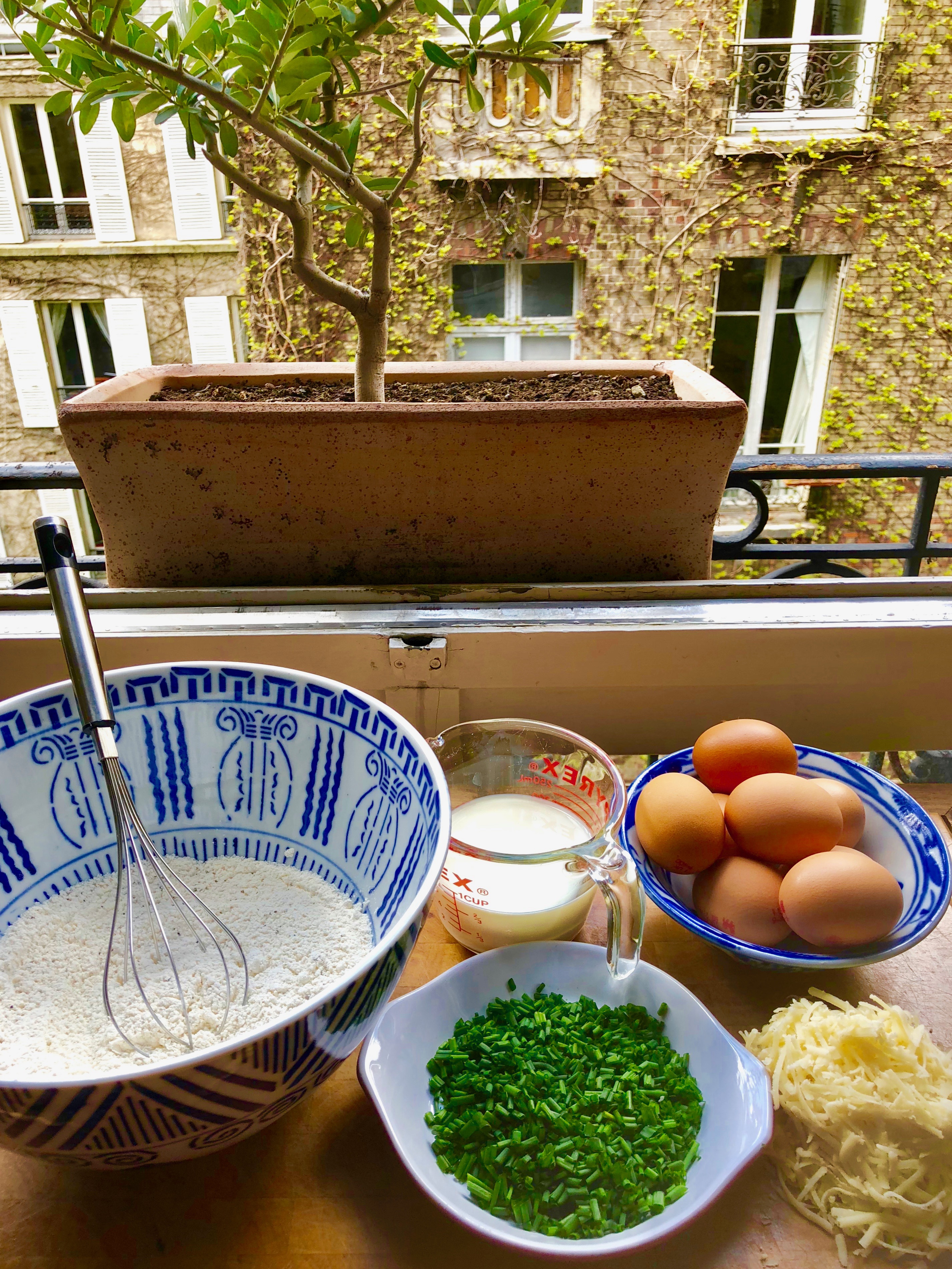
A solid Dutch oven, a cast iron skillet, and an excellent knife with a fine blade–the good life. –Anonymous
Cast iron cookware is one of the things to have in your life–but only if you love it.
An iron skillet is a link to the past [one of the oldest cooking tools in any kitchen], relevant to the present and can be passed into the future. It connects you to the people who used it before–to the everydayness of their lives.
Cast iron is durable on top of the stove and inside the oven. It retains the flavor of foods cooked in it and is considered to be superior for cooking in general. Cast iron grabs heat and holds it. It is not Teflon, something you throw away when it becomes scratched and used. Cast iron will outlive you and begs to be passed on.
There aren’t many things in modern life that are passed down through generations and remain both beautiful and useful. –Ronni Lundy, historian of Appalachian food

Older cast iron is considered by purists to be superior. It is made with higher quality raw materials and the interior surfaces are smoother. A good vintage pan will be completely black in color and almost glassy in the texture of its’ interior surface. Seasoned right it becomes nonstick. Pitted surfaces on newer cast iron allow food to stick. It’s also more difficult to season.
Several summers ago, I met “Cast Iron Don” in an antique mall in Saugatuck, Michigan when my daughter and I were on a mom/daughter getaway. Don is a consummate collector of vintage cast iron, owning more than 100 pieces. He uses only two.
Don offered a wealth of cast iron history and information when he spotted my interest in a marked “Griswold, Erie, PA” skillet for the reasonable price of $17.00. He said it was the best-priced-name-brand-cast-iron-piece in the whole market.

Cast iron cookware was made in the U.S. from the 18th century to the first half of the 20th century. Griswold, Wagner, and Sidney were brand names casting pans in foundries, which also made farm tools and weapons. Each piece was poured and polished by hand which took hours of human labor, but produced a notable difference. They were lighter, thinner, with a smoother interior.
Today, some cast iron pans are being made this way but, with labor costs as they are, prices are in the hundreds of dollars for a contemporary artisanal skillet. For the fun of a treasure hunt you can find vintage cast iron in your relatives’ kitchens, garage sales, estate auctions or flea markets at a fraction of the cost of anything new. Many of them will already be seasoned.
Well-seasoned cast iron is the equivalent of a broken in pair of well-loved jeans. This is what makes it both beautiful and utilitarian.
Cast iron is porous. To make a nonstick cooking surface it needs oil for protection. Seasoned correctly, oil bonds with the iron pores. When exposed to heat, the polymer chains link and form a durable, slick coating surface.
Back in Michigan, Cast Iron Don has refined his own techniques for rehabbing antique ironware. I don’t recommend any of his rather dangerous methods. Vats of lye, boiling water, hoses, and protective wearing apparel require a lot more time and caution than most consumers need to muster.
Rusted or mistreated skillets can often be restored with a simple steel wool scrubbing before re-seasoning. Or, use coarse salt mixed with oil and rub mixture around with a paper towel. For a super tough buildup of dirt and grime, place pan in a self-cleaning oven for one cycle. Sediment flakes off and can be wiped away.
After cleaning, the important next step is to season iron correctly.
- Animal fat! Use lard, bacon grease or Crisco. [Do not use vegetable based oils because they leave a sticky residue and you have to start over, so no olive oil.]
- Coat the entire surface including edges. Place upside down in 500 F. or 260 C. oven over a piece of foil. Bake 1 hour 15 minutes.
- Cool gradually in oven with door ajar. Once thoroughly cooled, wipe off any excess oil.
Cast iron needs to be cleaned in a specific way.
- Do not soak in water, put in dishwasher, or use soap.
- A hot water rinse using a stiff brush to clean off residue will keep seasoning intact. If necessary, use a small plastic scraper first.
- Dry completely. I always air-dry, but my daughter puts her cast iron on the stove over a low flame, briefly, to evaporate water.
- If necessary, wipe with a thin coat of oil and buff with paper towel.
Use your cast iron often. For everything! Consider it an heirloom to be passed on and on and on from generation to generation. Embody it with your own family’s cooking lore. Someone else may get a taste of it down the road…
Two classic cast iron skillet recipes:
DUTCH BABY, SWEET – serves 2
- Start with ingredients at room temperature.
- In a bowl, whisk together 3 large eggs.
- Then whisk in ½ C. flour, ½ C. milk, 1 T. sugar, ½ tsp. vanilla, and a pinch of nutmeg and salt.
- Melt 2-3 T. butter in 10-12 inch cast iron skillet by placing in oven at 425 F. [220 C]. Watch so butter doesn’t burn! As soon as butter melts, pour in the batter.
- Bake for 15-20 minutes until puffy and golden.
- Cut into wedges and serve immediately with choice of toppings: maple syrup, confectioner’s sugar, confiture [jam], cinnamon sugar, or fresh berries.
- Makes an excellent, light, breakfast pancake.

DUTCH BABY, SAVORY

- In a large bowl, whisk together 1 C. + 2 T. flour, ½ tsp. salt, ½ tsp. pepper.
- In a separate bowl, combine 8 large eggs and ¾ C. whole milk.
- Whisk wet ingredients into dry until just combined.
- Stir in 2 T. fresh thyme, 2 T. minced chives [or parsley or tarragon].
- Melt 2-3 T. butter in 12-inch cast iron skillet until it smells nutty and brown. Swirl to coat sides and bottom of pan.
- Pour in batter. Scatter ¾ C. freshly grated Gruyère or Parmesan cheese over top.
- Bake 15-20 minutes at 425 F. [220 C.] until puffy and golden.
- Serve with lemon wedges and Siracha sauce. Both add a lot of flavor!
- Perfect brunch or hors d’oeuvre dish.










Great post!! I knew I kept my Grandmother’s cast iron skillet for a reason. It’s kind of funny that when we moved, this was one cooking item I kept. Mine needs the love and attention that your post enlightened me on. Now I am excited about getting it out of the packing box still in the garage.
It’s amazing the variety of incredible posts you write about! Keep them coming my friend!!!
LikeLike
Wendy,
A variation of your sweet Dutch Baby has been a ‘go to’ staple on the weekends since before kiddos-but I have never tried the savory version-I just put salt on the sweet one:) Now will try your savory recipe-Thanks!!
LikeLike
My most prized possession is my grandmorher’s cast iron skillet. It must be at least 80 years old! I’ve taken it with me round the world. It’s a part of our family’s collective culinary memory bank. My kids will probably fight over it once I move on!!! Thanks for this great post! Wish I could meet Cast Iron Don!
LikeLike
Janmarie, Maybe it’s time to collect a few more vintage skillets to spread the wealth among your family members. I’m not a fanatic collector of cast iron, but I have 3 skillets of different sizes in both my kitchen overseas and at home in Colorado. I use all of them. Finally gave away all other hangers-on because these are the ones I love to use…
LikeLiked by 1 person
Wow! Sounds great! Now I just need you to come here and make it for me..
I have the pan:)
LikeLike
Gail, I’ll make it for you when you come to my house and we’ll make it together at yours. So very easy and super delicious for a sweet or savoury bite…
LikeLike
Great tips here. We live by our cast iron skillets! Thank you, Wendy!
LikeLike